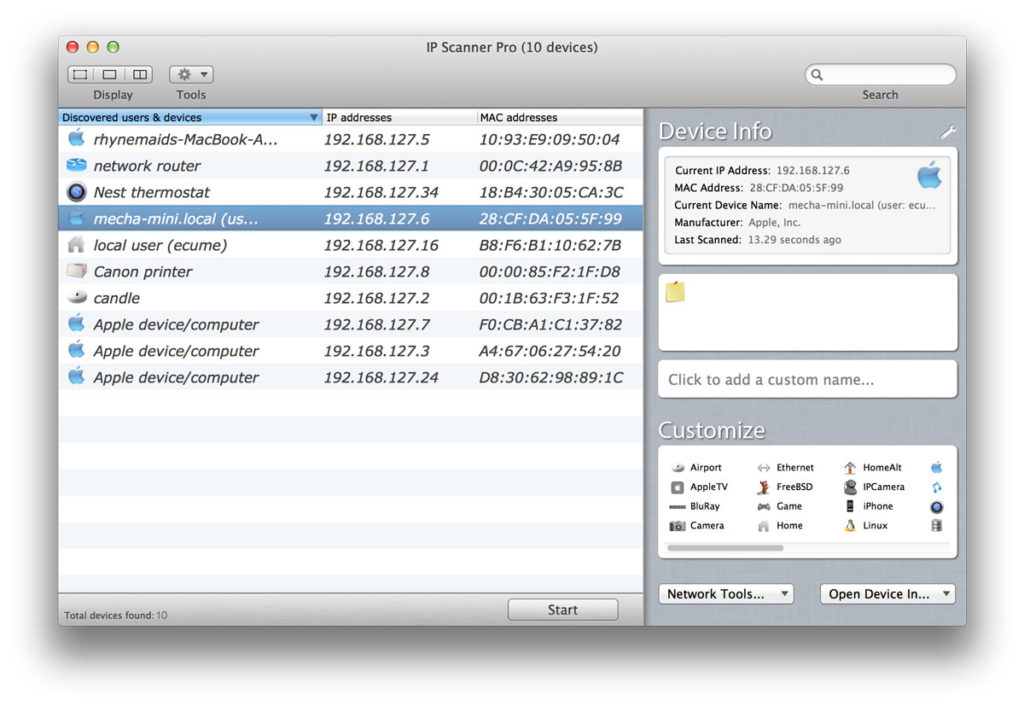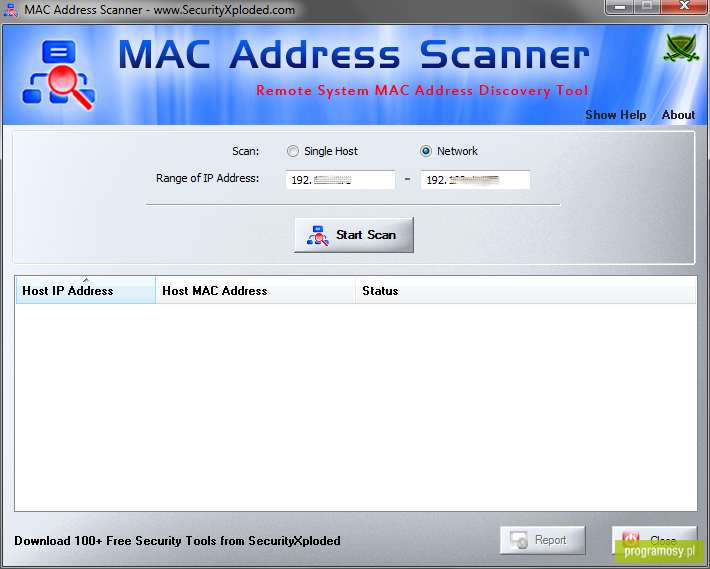

- #Scan network mac address how to#
- #Scan network mac address for mac#
- #Scan network mac address manual#
- #Scan network mac address full#
- #Scan network mac address free#
While it’s possible to scan a network for active IP addresses using native commands, manually tracking the addresses of all networked devices can quickly become an outsized task for any one staff member.
#Scan network mac address free#
Using an IP address scanner, admins can see which addresses are active, which are free for reallocation, which might belong to unauthorized users, and which have perhaps been duplicated and caused collisions. This is especially true for large organizations using dynamic IP addresses, in which case the large volume of networked devices and staggered address changes can quickly become overwhelming to track and organize. Typically, the best way to find the IP addresses of all devices on a network is to invest in software. However, there are a few ways to scan local networks for IP addresses. This will enable you to further narrow down what devices could be experiencing or causing problems. The “ping -t” command allows you to perform an extended ping on the list produced by the previous command, testing connectivity and latency within the network. Optional: Input the command “ping -t”.This list is incredibly informative, containing the IP addresses, MAC addresses, and allocation type (whether static or dynamic) for all live hosts. In other words, the “arp -a” command displays all active IP addresses connected to the local network. ARP stands for “Address Resolution Protocol,” and the “-a” appendage of the command prompts the device to list all the IP addresses found within the ARP cache for the associated network. If the subnet mask is 255.255.255.0, then you know the first 3 bytes are the network ID (192.168.1) and your broadcast IP address is 192.168.1.255.


For example, in a Class C IPv4 network-which most small local networks are wont to be-you may find your computer’s IP address is, let’s say, 192.168.1.75. Your computer will then display its own IP address, subnet mask, gateway address, and more, making it possible for you to determine the network number you’ll be scanning.
#Scan network mac address for mac#
Enter the command “ipconfig” for Mac or “ifconfig” on Linux.To rapidly scan a network yourself using native operating system (OS) capabilities, follow these steps. This method is best for those looking to perform a rapid, one-time device check or for those heading smaller organizations with a more manageable device list.
#Scan network mac address manual#
The most basic way to find all the IP addresses on a network is with a manual network scan.
#Scan network mac address full#
When organizational members experience problems connecting their device to the network or the internet, having a full list of IP addresses on the network can guide administrators as they troubleshoot and restore order.
#Scan network mac address how to#
Knowing how to scan the network for devices is the first step, and one of the most fundamental, in managing IP addresses. How to Find All IP Addresses on a Network



 0 kommentar(er)
0 kommentar(er)
